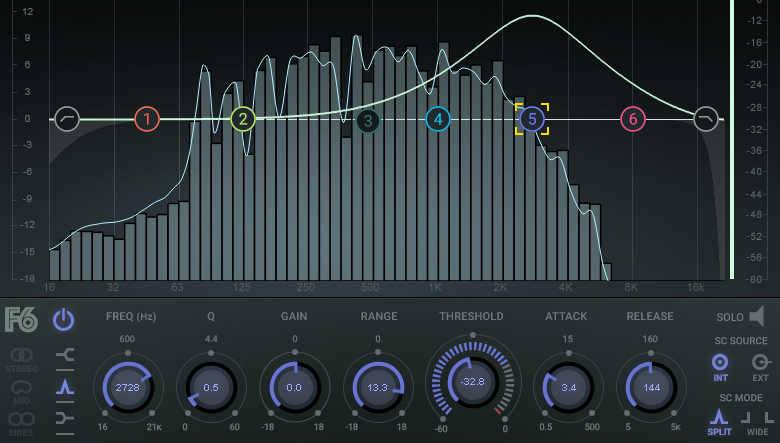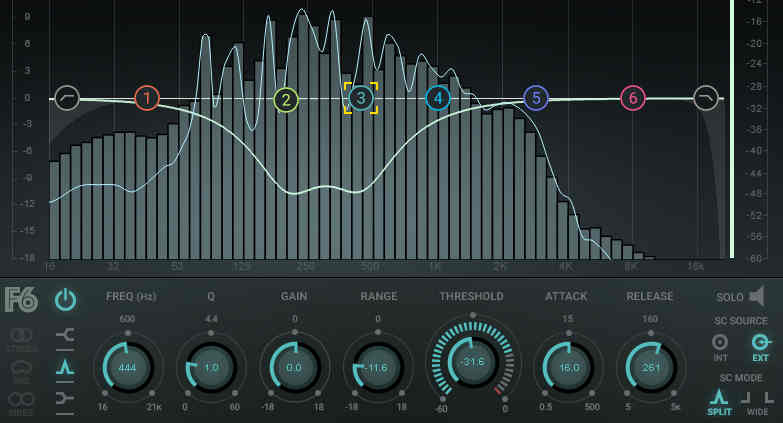Equalizers can shape your guitar’s tone in a variety of ways. But standard equalizers can’t react intelligently to the dynamics of your playing. For example, suppose you use EQ to accent loud strumming by boosting the treble. Even when you play softly, that same treble boost will still be present.
Dynamic equalization combines equalization and dynamics processing, like compression and expansion. It boosts (expands) or cuts (compresses) certain frequencies only if they exceed a specified threshold. Multiband compression also combines dynamics and equalization. However, dynamic EQ uses parametric equalization—you can even narrow down the affected frequency to a dead spot on a bass’s neck. As an added bonus, dynamic EQ often has sidechain capabilities. This lets you control your guitar’s EQ with audio from a different track.
For a taste of some of dynamic EQ’s possibilities, let’s check out three practical applications for guitar. (Note: the screenshots of Waves’ F6 Dynamic EQ have been modified somewhat to take up less page space.)
AN ACOUSTIFIER FOR ELECTRIC GUITAR

This application gives electric guitars some acoustic-like qualities. The F6 plug-in adds a major boost around 2.7 kHz, but only when playing hard. Therefore, an electric guitar sounds brighter when you play more forcefully, which emulates how acoustic guitars react to touch. This technique is especially useful for helping the neck pickup “speak” better in a track.
AMP SIM “DE-HARSHER”

The F6 dynamic EQ inserts before an amp sim. When you play harder, the EQ reduces high frequencies going into the amp sim so the heavily distorted tone isn’t as harsh. This is like an intelligent version of rolling off your tone control for a smoother, creamier sound. As the chord decays, the dynamic EQ restores the highs so the sound is neither harsh when you’re playing hard, nor muffled when you play more softly.
MAKE YOUR VOCALIST HAPPY

Vocals and guitar frequencies can overlap, and conflict. The standard solution is compressing the guitar when the vocalist is singing. But dynamic EQ with sidechaining is better, because it can reduce the specific frequencies that actually conflict with the vocal, not just the entire guitar. For example, my vocals are predominantly in the 250-500 Hz range. In this application, the vocal track injects a sidechain control signal into the guitar track’s F6 to attenuate only the frequencies that conflict. The louder the vocal, the more it reduces the guitar’s response in the specified range.
Cool stuff, eh?
